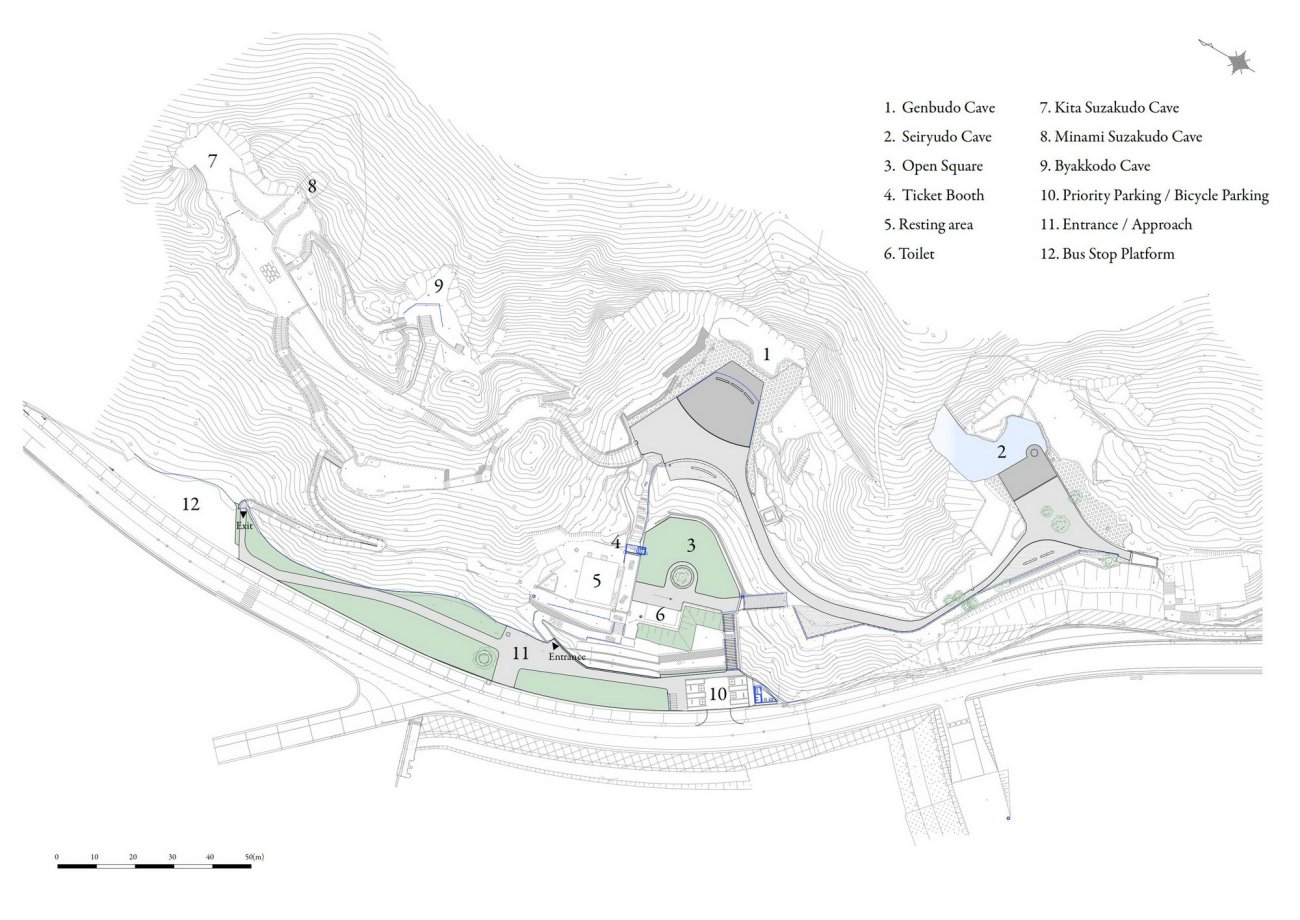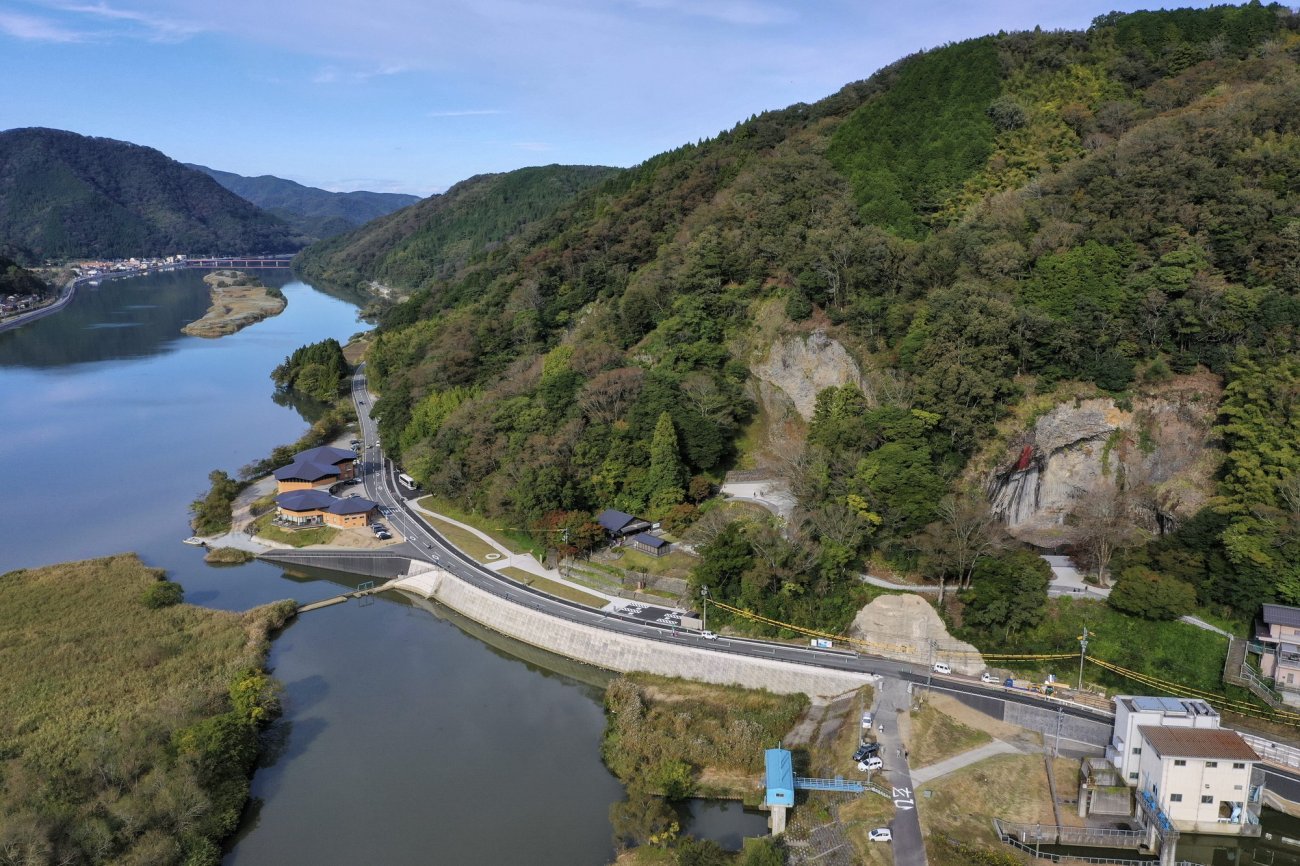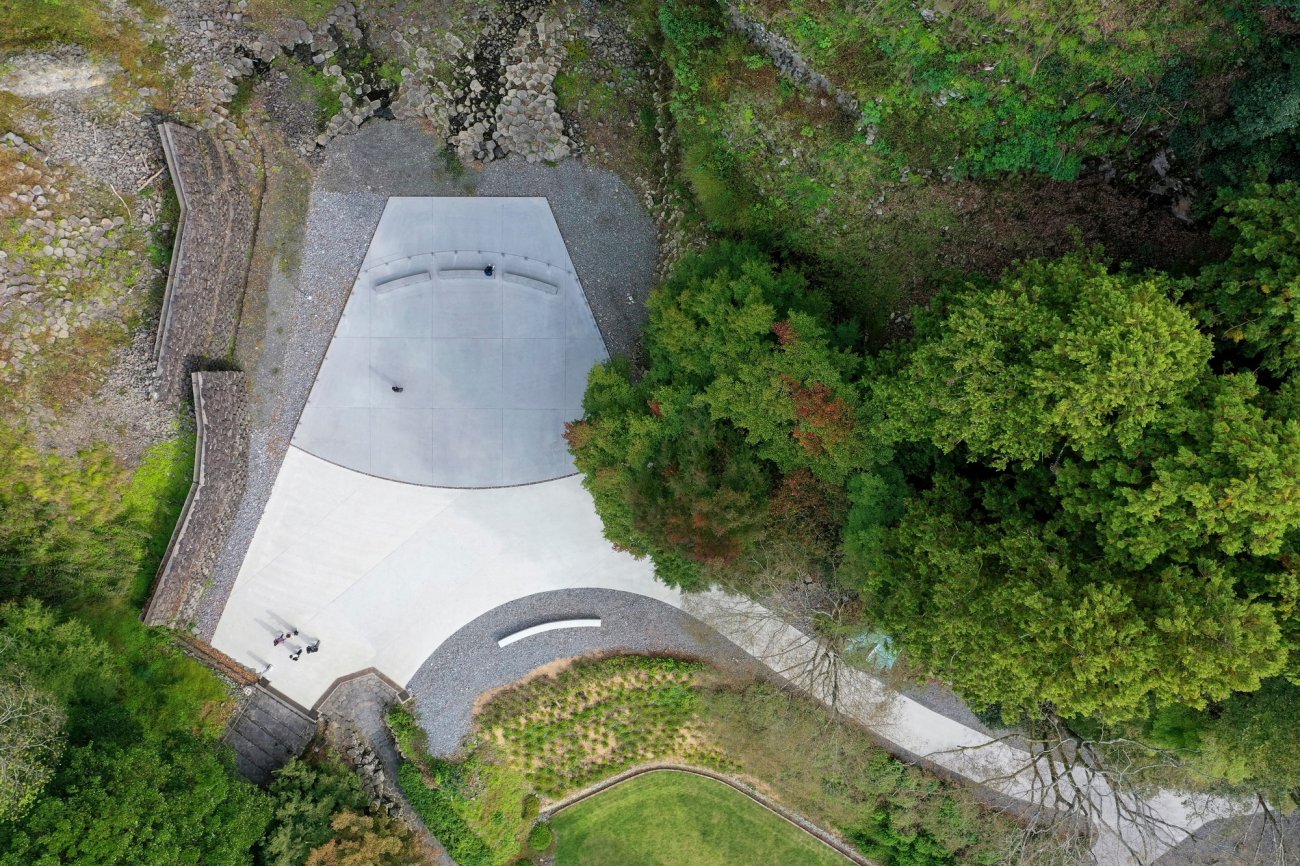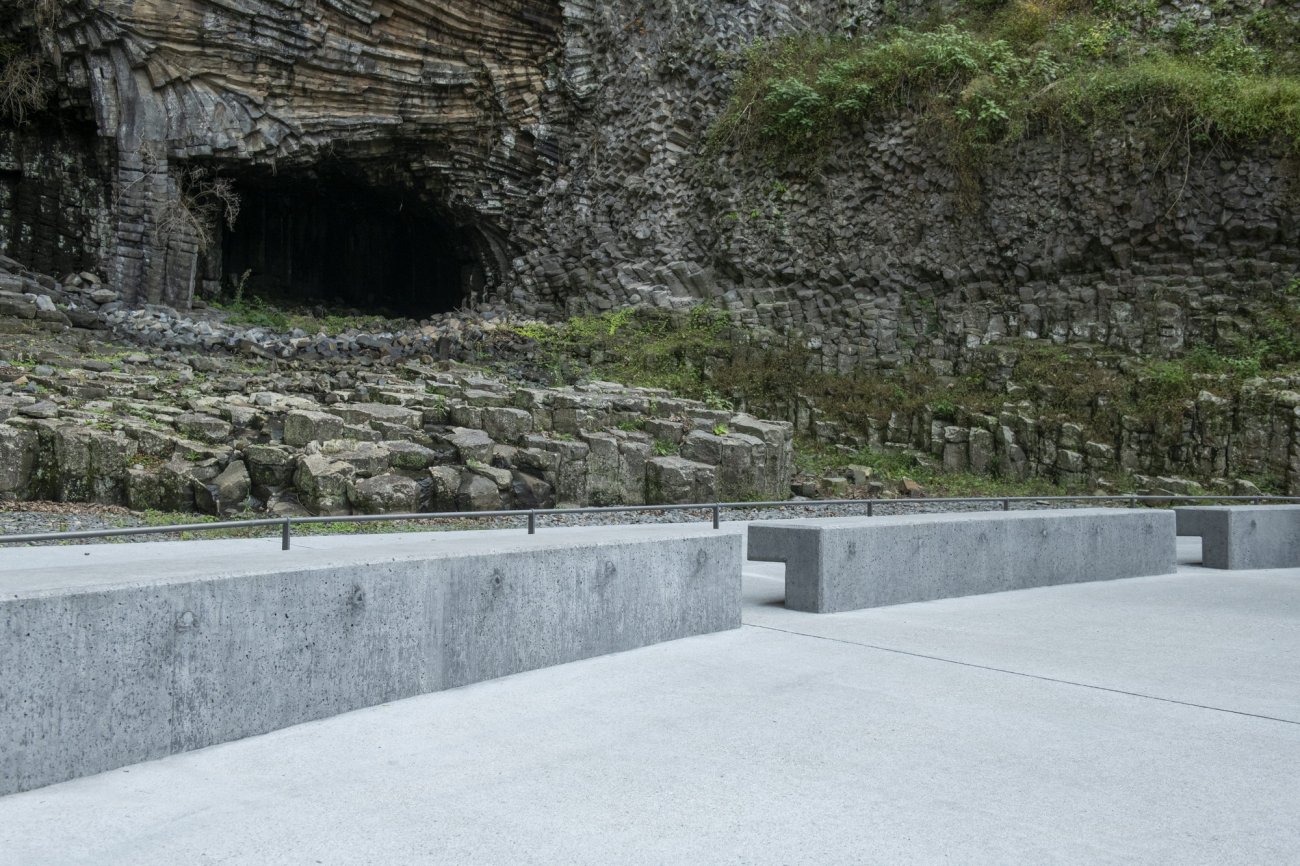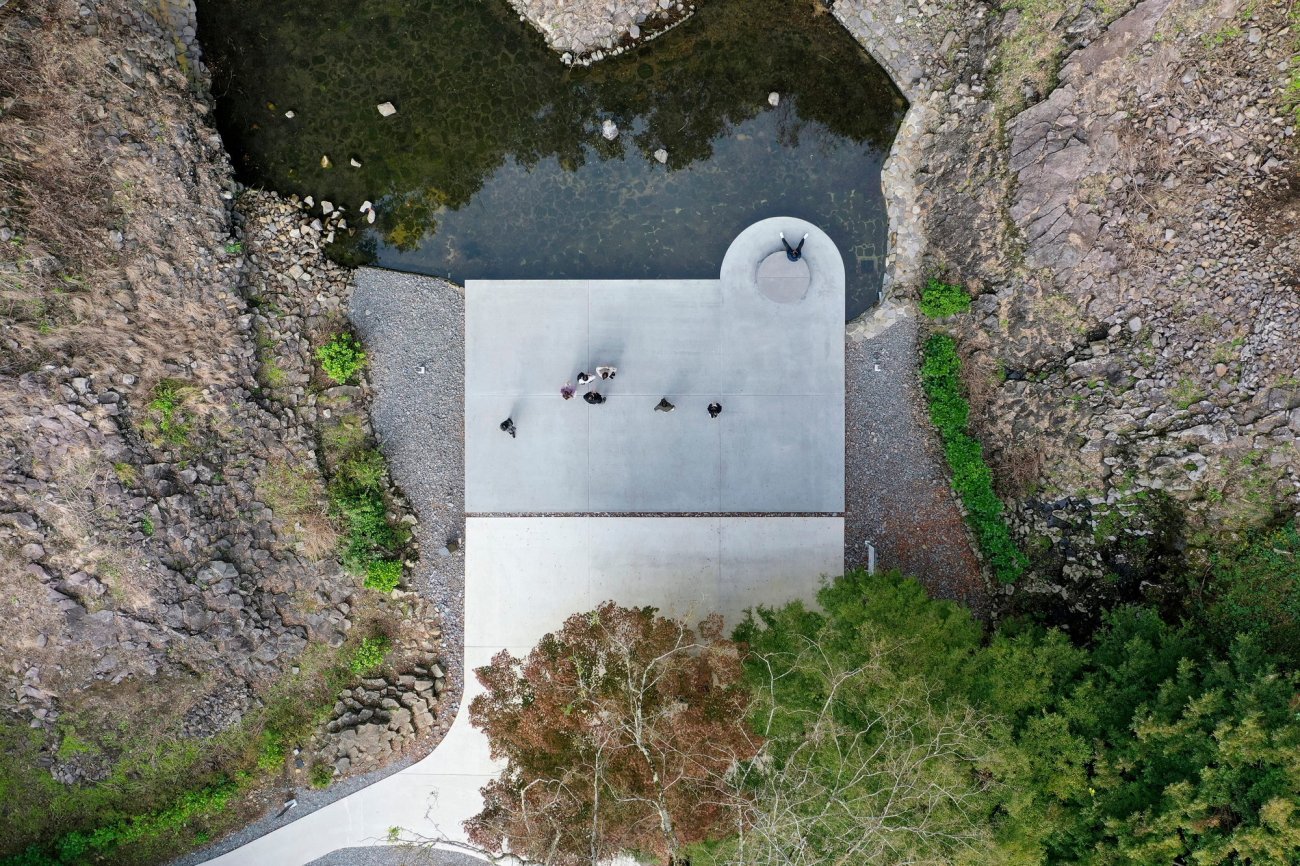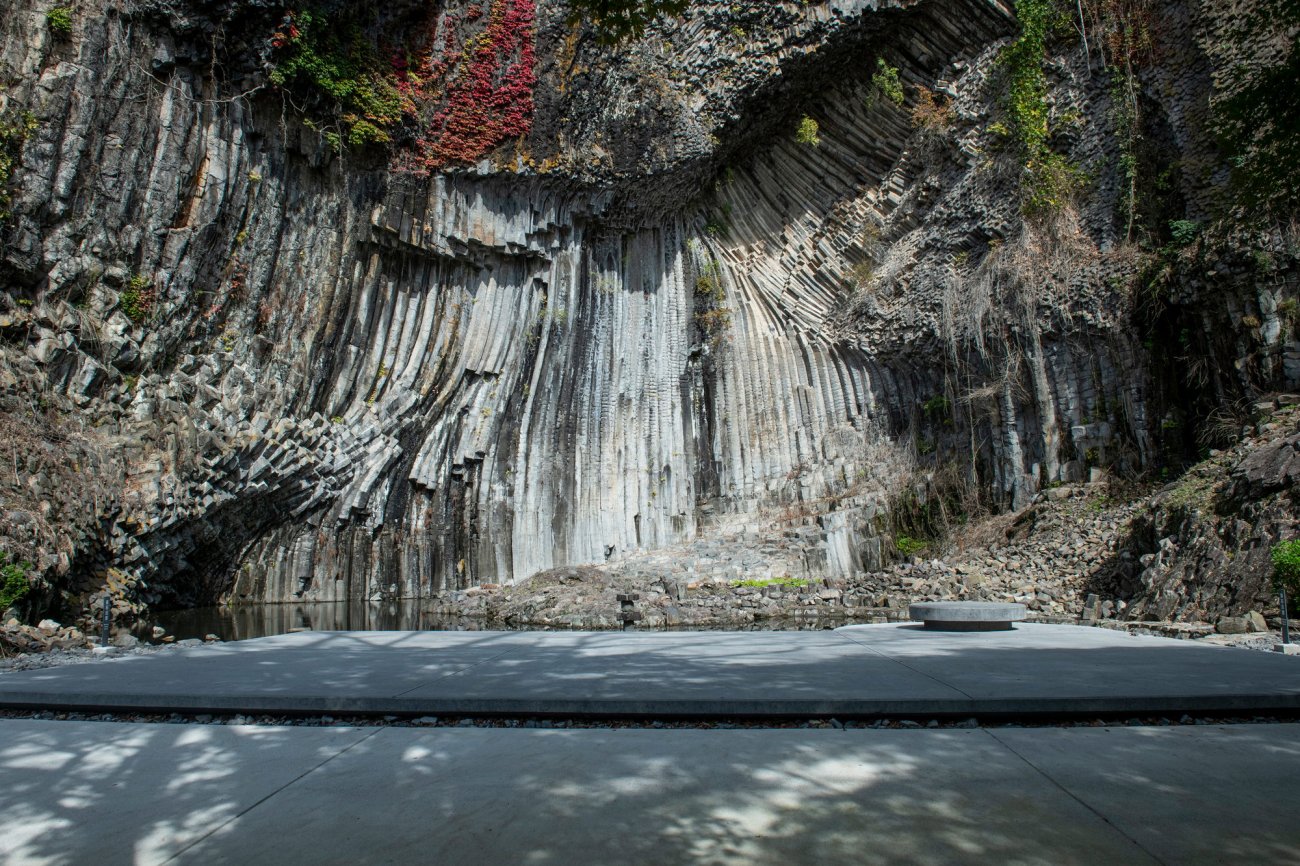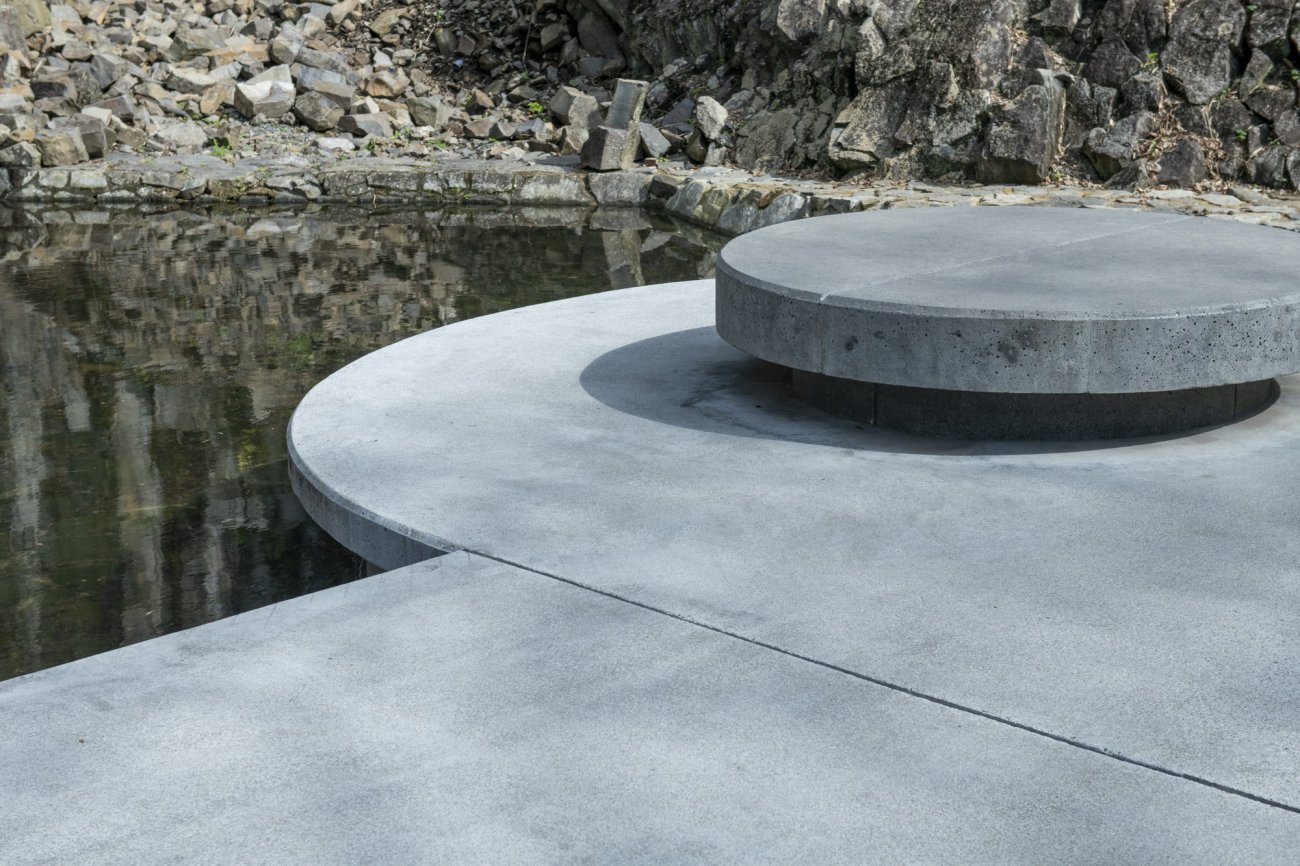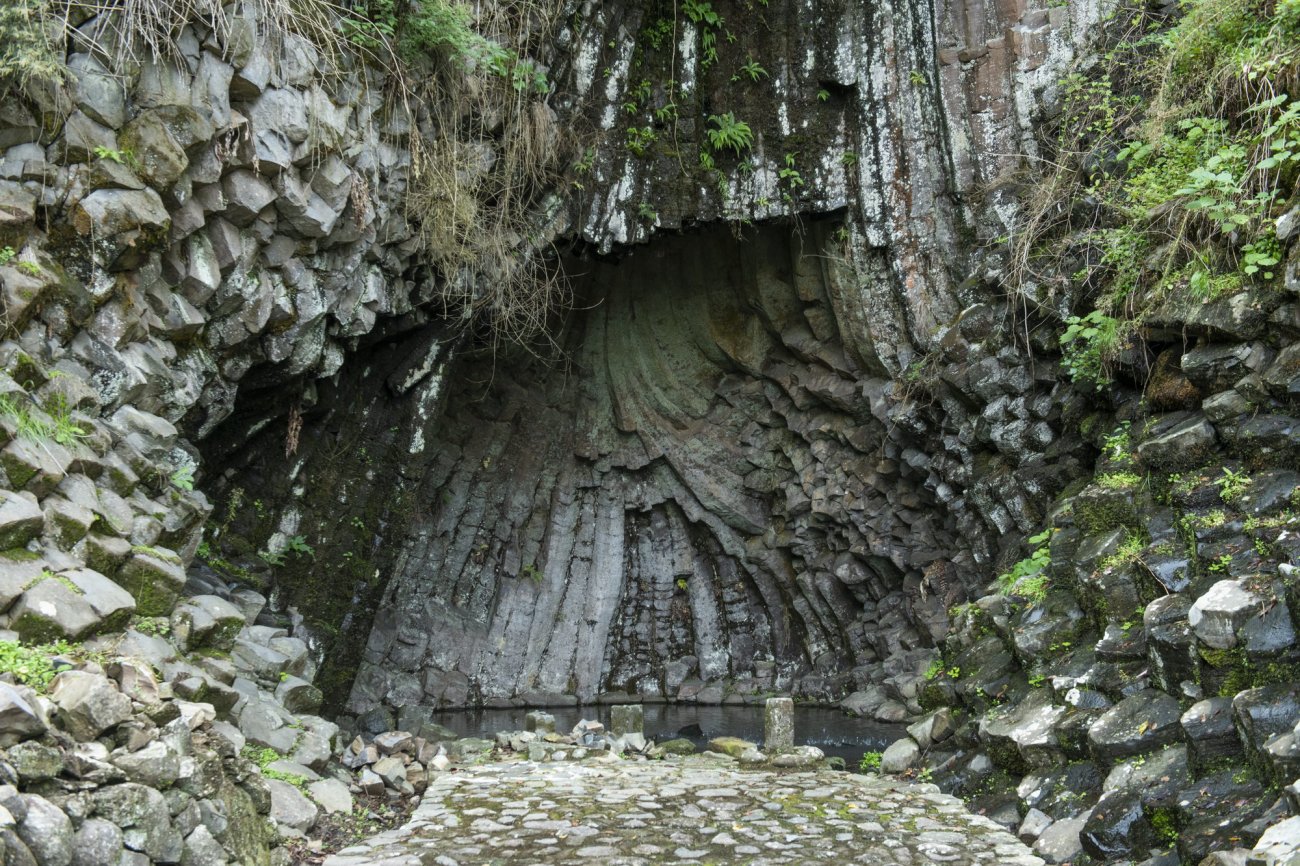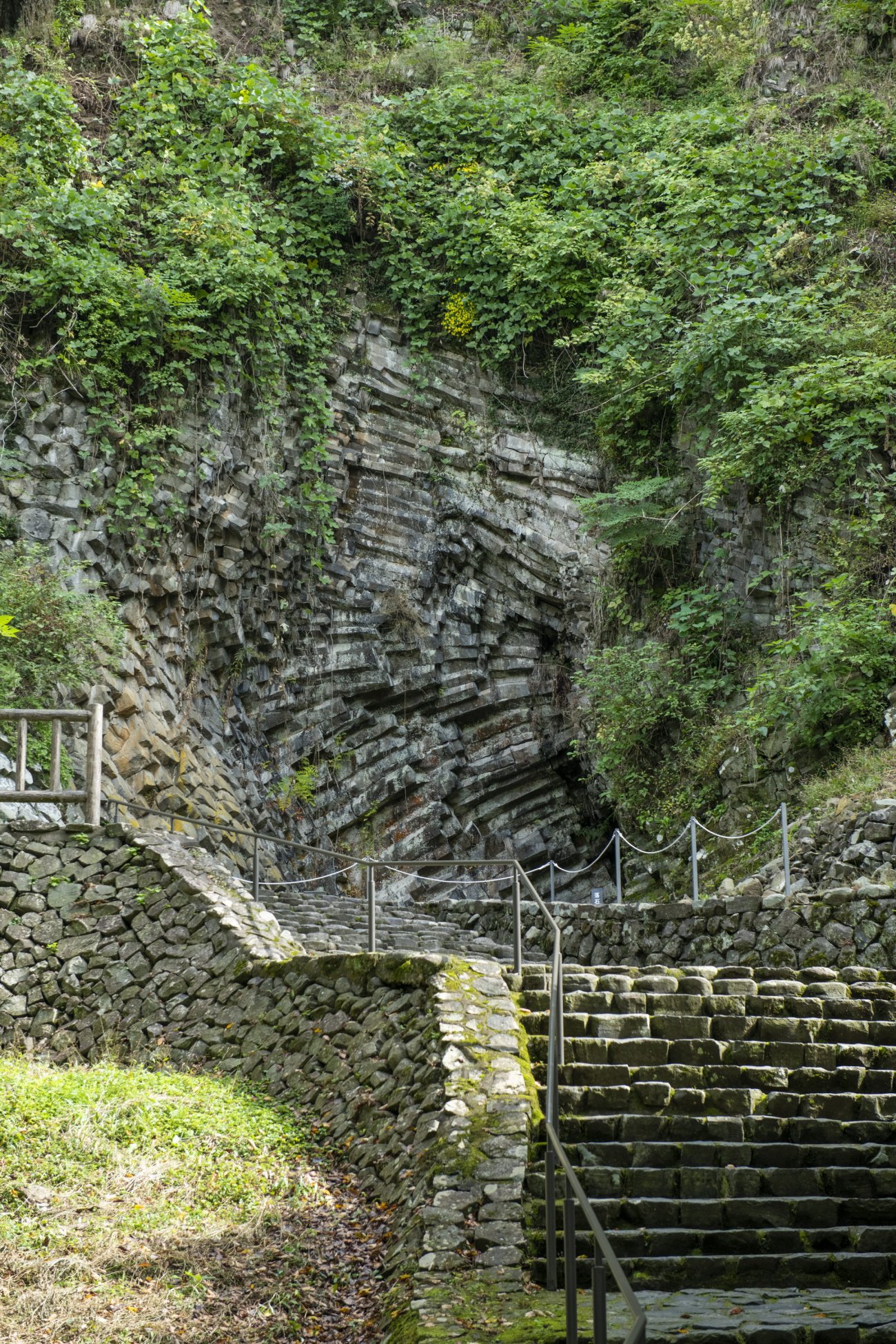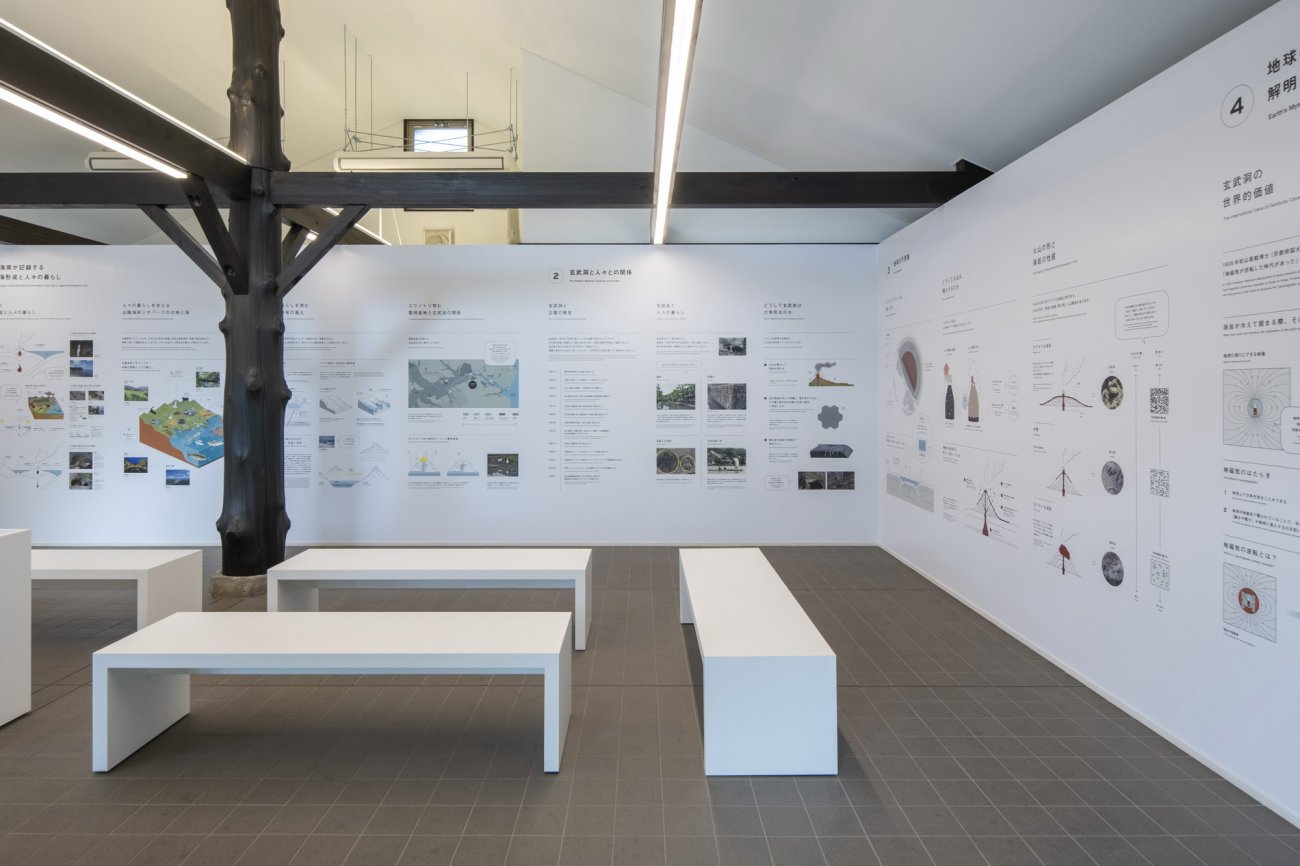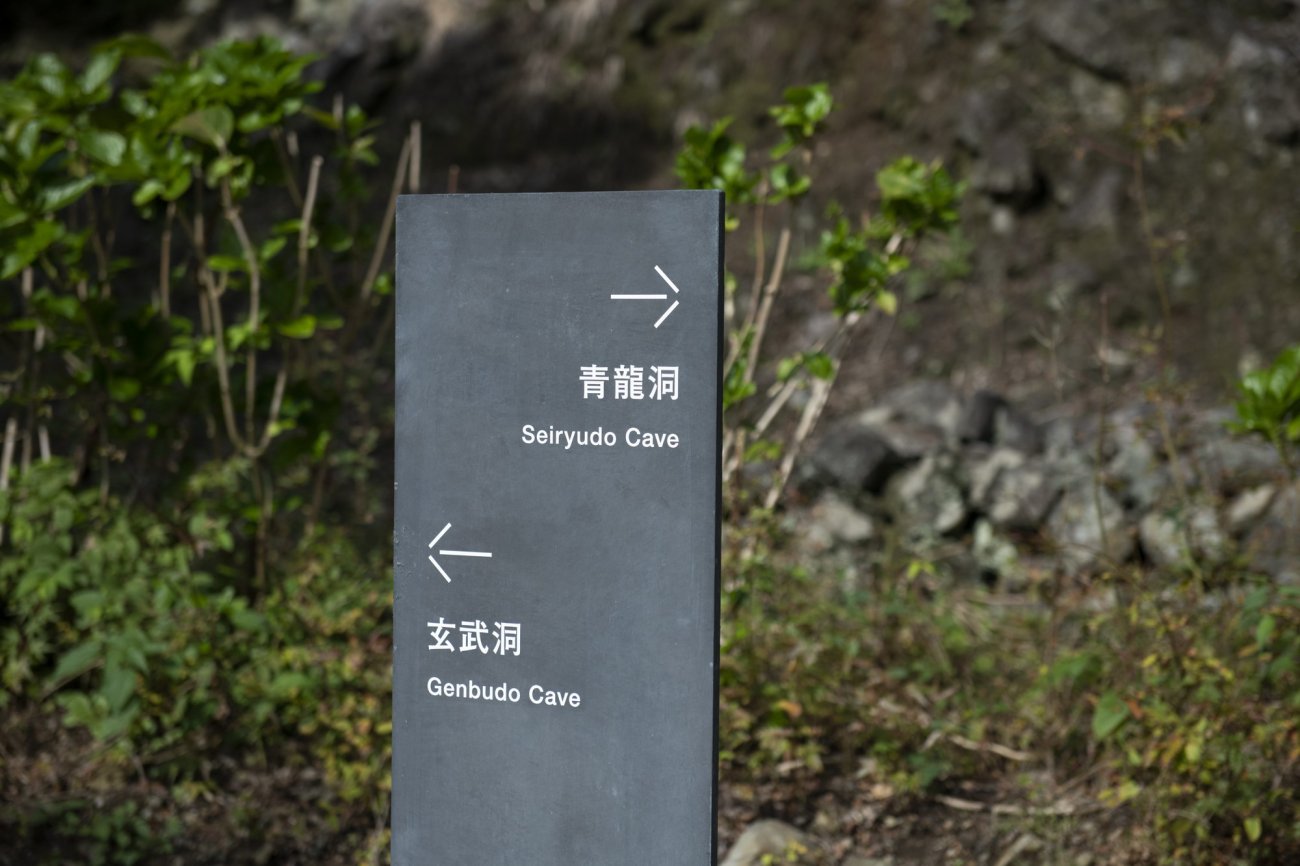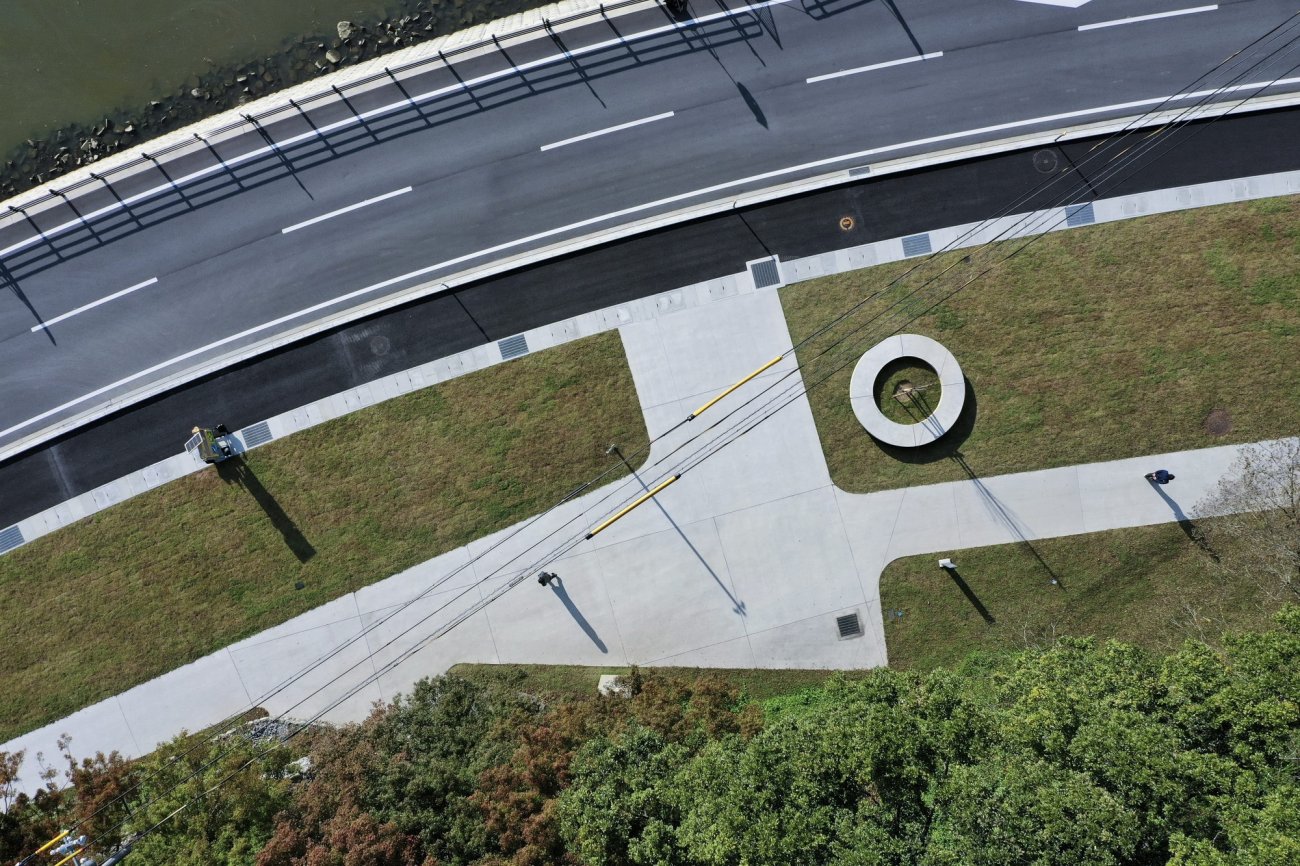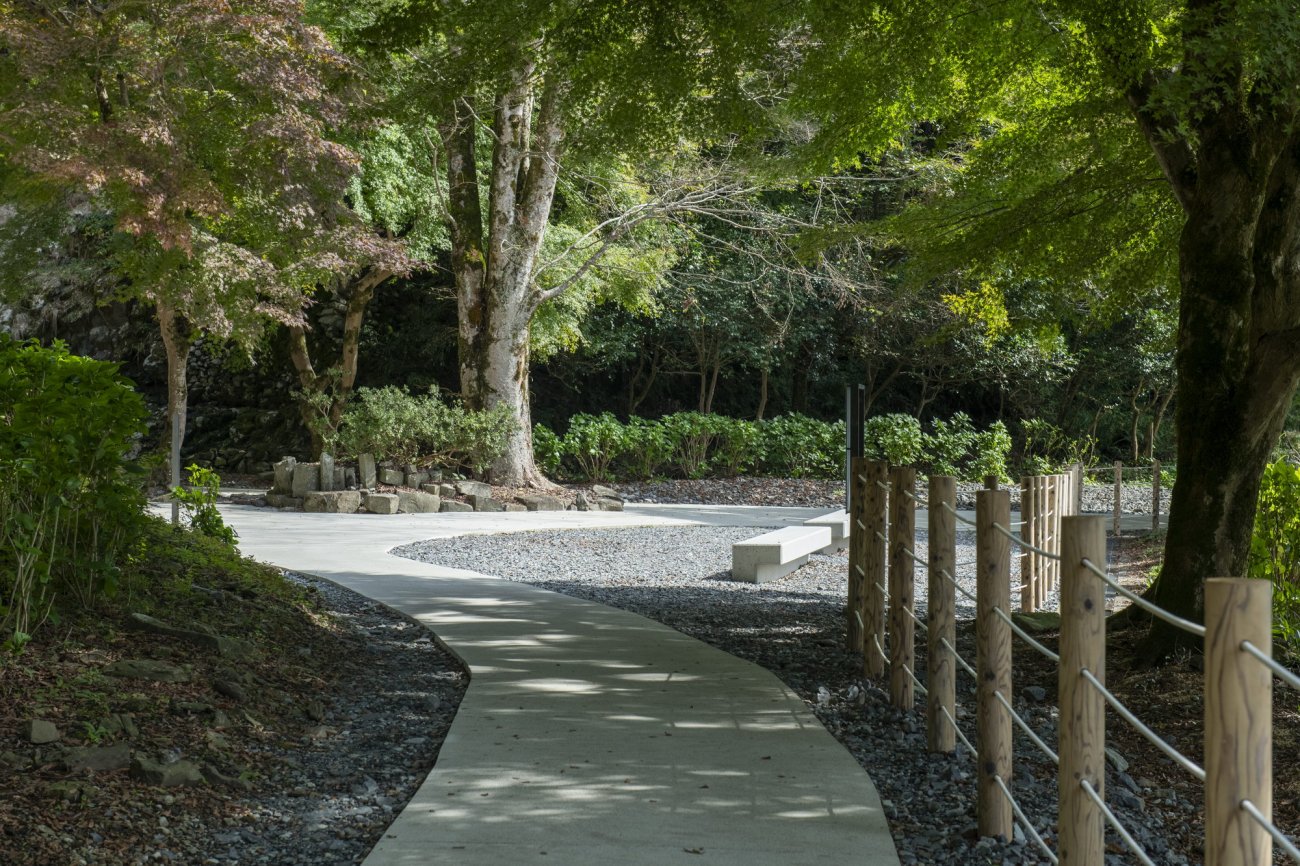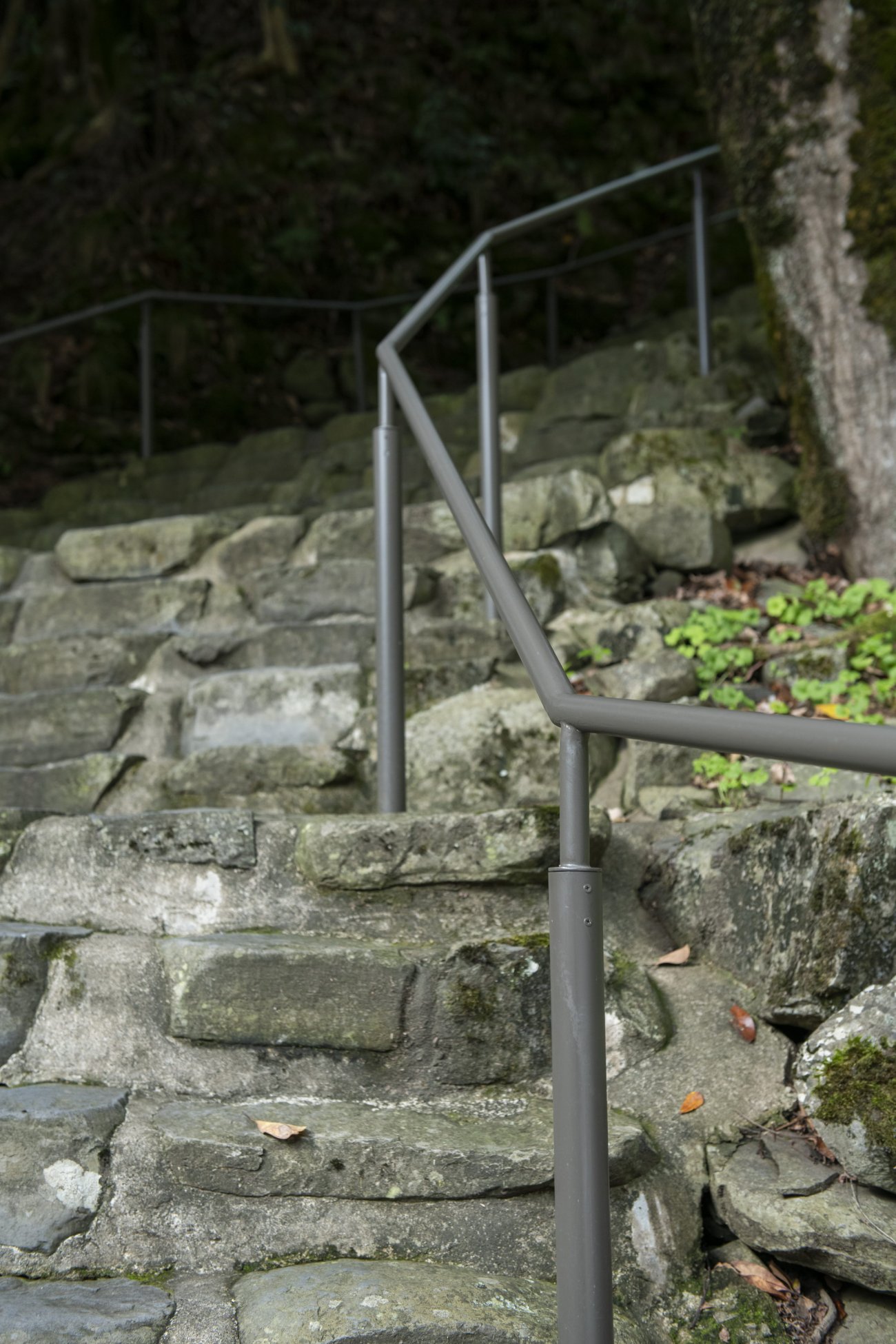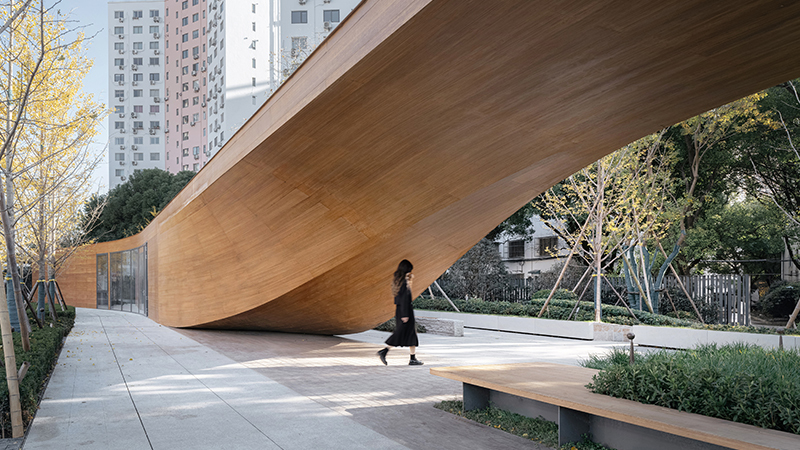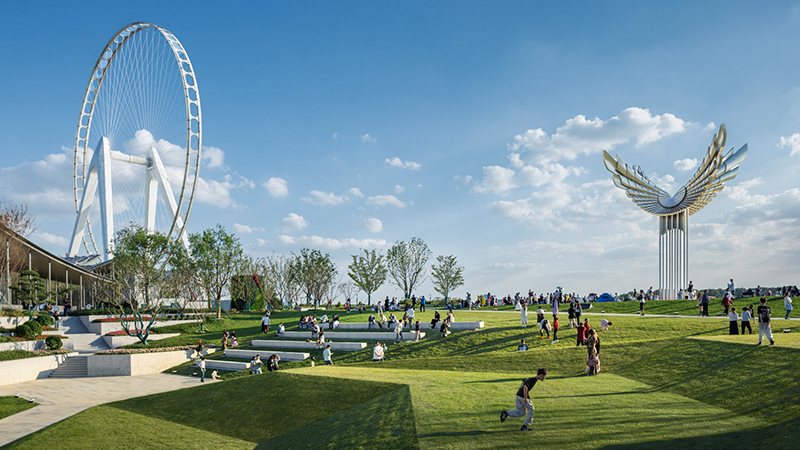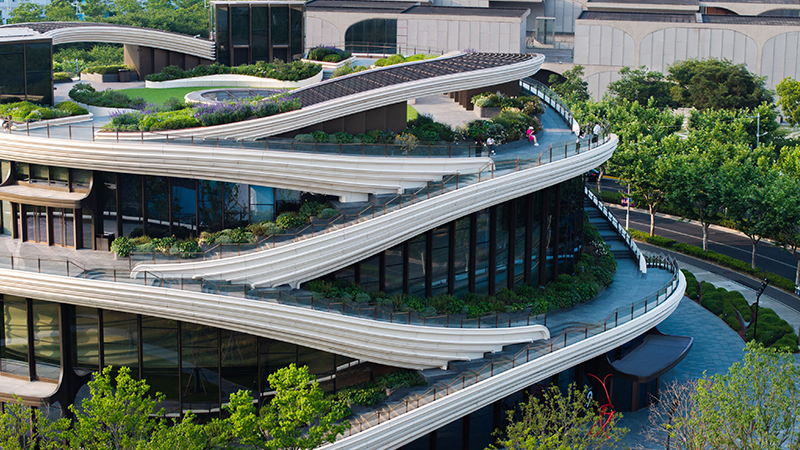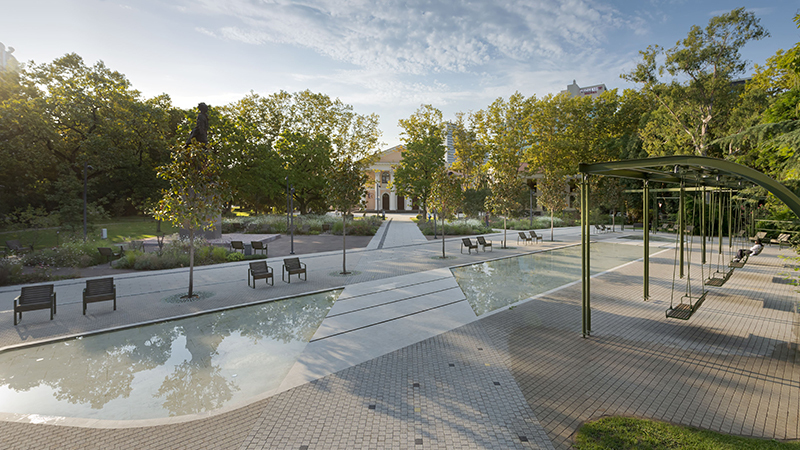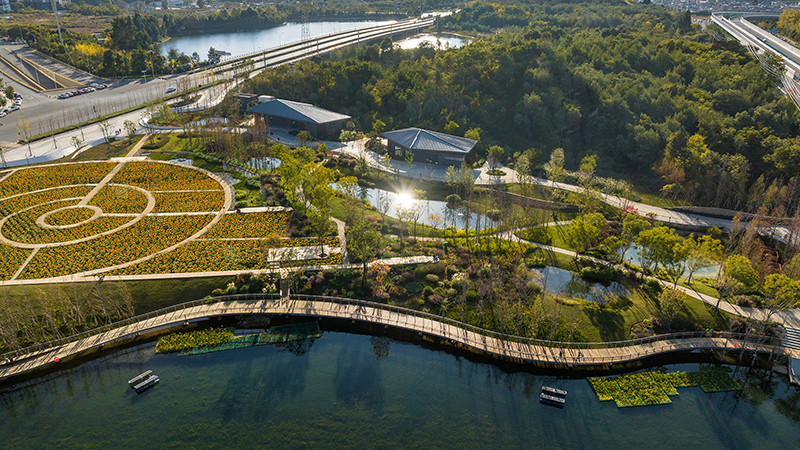位于兵库县西侧的丰冈市的“玄武洞公园”是一个自然公园,同时也是当地的收费景点,游客可以在这里看到被称为“柱状节理”的地质特征,这些地质特征大约在160万年前岩浆冷却凝固时形成,也称为“大自然的雕塑”。该项目是玄武洞公园的重建计划,在整个规划过程中,讨论最多的问题是如何让游客体验柱状关节的力量,另一个问题是公园现有元素应保留的程度与应添加新元素之间的平衡。
"Genbu-do Park" in Toyooka City, located on the west side of Hyogo Prefecture, is a nature park where visitors can see the characteristic geological features called "columnar joints" that developed roughly 1.6 million years ago when the magma cooled and solidified. This project was a redevelopment plan for this park, which has been a scenic spot for many years, in conjunction with the transition to charging admission for visitors. The most discussed issue throughout the planning process was how to enable visitors to experience the power of the columnar joints, also known as "nature's sculptures". Another issue was the balance between the degree to which existing elements of the park should be retained and new elements should be added.
该项目维护的核心是在“玄武洞”和“青龙洞”洞穴前建造大型混凝土观景台,洞穴里有特别大的柱状节理,每个观景台前面都放置了长椅,方便游客仰望眼前的洞穴,创造了一个游客可以面对自然的地方。此外,平台和长椅的表面进行了喷砂处理,使其表面粗糙,即使它们是由混凝土制成,也能创造出与自然兼容的饰面。整个公园的公园道路都采用了相同的材料和饰面,并使用了曲线和直线来与自然的有机线条形成对比。
The core of this maintenance was the creation of large concrete "stages" in front of the ”Genbu-do” and ”Seiryu-do” caves, which have particularly large columnar joints. Benches were placed in front of each stage, creating a place where visitors can confront nature as if they were looking up at the cave in front of them. In addition, the surfaces of the platforms and benches were sandblasted to give them a rough surface, creating a finish that is compatible with nature even though they are made of concrete. The same materials and finishes were used for the park paths throughout the park, and curved and linear lines were used to create a contrast with the organic lines of nature.
在我们重新开发公园进行改善之前,现有公园存在几个问题:第一个问题是颜色的问题,在观看洞穴时,颜色对观众来说很突出,一些现有的铺装表面保持了淡黄色的色调,虽然颜色温和,但在观赏自然时产生了残酷的视觉印象。另一个挑战是原本用来防止游客进入各个洞穴的围栏,考虑到在公园的某些区域有落石的危险,安装了围栏来控制进入,但在确保公园游客安全的同时,它们也造成了欣赏自然的视觉障碍。因此,新的平台计划解决这些问题,现有的围栏被拆除掉,并在必要的地方安装了钢筋,与舞台融为一体,尽可能减少其存在感,通过回顾结构的颜色、材料和形式,减少了洞穴和观众之间的空间分离,让观众体验到自然的力量。
Behind the development of these improvements were several issues that have been identified within the existing park. The first was the issue of color, which stands out to the viewer when viewing the caves. Some of the existing paved surfaces were maintained in a yellowish tone, which, although gentle in color, created a brutal visual impression for viewing nature. Another challenge were the original fences installed to prevent visitors from entering the various caves. Given the danger of falling rocks in some areas of the park, the fences were installed to control entry, but while ensuring the safety of park visitors, they also created a visual obstacle to appreciate nature. Thus, the new platform was planned to solve these issues. The existing fence, which was considered problematic, was removed, and replaced with steel bars were installed where necessary, integrated with the stage, minimizing its presence as much as possible. By reviewing the colors, materials, and forms of the structures, the spatial separation between the caves and the viewers was reduced, allowing the viewers to experience the power of nature as it is.
其他关键升级包括将公园现有设施的外墙从黄色改为灰色,楼梯扶手的颜色从橙色改为灰色。由于收费系统的改变,售票亭是新增的,它以最小的必要尺寸建造,让自然成为中心舞台。售票亭的外墙和新安装的标志采用了磷酸盐处理的金属,以统一设计,与混凝土台阶类似,材料的选择与环境相适应。公园内设有用于休息和放松的展示板,用来解释玄武洞的历史和地质背景,大大小小的信息在专家的拼凑下进行重组设计,创造了一个图形可读的环境。
Other key upgrades included the change of the exterior wall of the existing facilities in the park from yellow to gray, and the change of the color of the staircase handrail from orange to gray, while maintaining the existing support columns. The ticket booth, which was newly required as a result of the change to a toll system, was constructed at the minimum necessary size, allowing nature to take the center stage. Phosphate-treated metal was used for the exterior walls of the ticket booth and for signs that were newly installed to unify the design, and similar to the concrete stage, the materials were selected to blend in with the environment over time. The building for rest and relaxation inside the park had display panels to explain the history and geological background of Genbu-do, however, these panels contained too much information for the size of the space, thus we restructured the necessary information with the help of experts and created a graphically readable situation.
总的来说,该项目并没有对景点进行重大的、全面的更新,在利用可利用的同时,对存在问题的地方进行了必要的更新。目的是在重建的同时,保持过去的良好氛围,以便下一个时代的游客能够记住它。
Overall, we did not attempt a major, comprehensive renewal of the site. While making use of what could be utilized, necessary updates were made in areas where problems existed. The goal was to maintain the good atmosphere of the past while "re-editing" the site so that it would be remembered by visitors in the next era.
用途:地质公园
时间:2019年12月至2022年6月
场地面积:1.47公顷
地点:日本兵库县
设计开发:CASE-REAL/Fuatsumata Koichi、Shimohira Koichi,Shibata Ritsu
详细设计:Kitai Sekkei,Matsuda建筑师事务所
施工:土木工程/Nakagawa、建筑工程/Seiwa、施工监理/Shinei
照明计划:Tatsuki Nakamura(分支照明设计)
标志、平面设计:BOOTLEG/Fumikazu Ohara、Takuma Fukuda
照片:Hiroshi Mizusaki
Use: Geopark
Period: Dec 2019 - Jun 2022
Site area: 1.47ha
Location: Hyogo, Japan
Design development: CASE-REAL / Koichi Futatsumata, Koichi Shimohira, Ritsu Shibata
Detail design: Kitai Sekkei, Matsuda Architect Office
Construction: Civil Works / Nakagawa, Building Works / Seiwa, Construction Supervision / Shinei
Lighting Plan: Tatsuki Nakamura (BRANCH LIGHTING DESIGN)
Sign, Graphic design: BOOTLEG / Fumikazu Ohara, Takuma Fukuda
Photo: Hiroshi Mizusaki
更新日期:2023-02-07 09:29:01
非常感谢 CASE-REAL 带来的精彩项目, 查阅更多Appreciations towards CASE-REAL for sharing wonderful work on hhlloo. Click to see more works!

